 This article appeared in Human Life Review, Summer 2010. Some minor changes were made for this website posting. Copyright © 2010 by Mary Meehan. Outfoxing the Grim Reaper Mary Meehan "I'm going to go at any minute," Trendell Terry said. On a drizzly day in October, 1972, he was crouched on the ledge of a roof, 17 stories above the traffic on Broadway, New York City. Police were up there on the roof with him, trying to talk him out of jumping but afraid he would do it if they moved too close to him. While a huge crowd on the sidewalks below watched the drama, Terry told police about his time in mental hospitals, unemployment, and separation from his wife and children. After nearly two hours of back-and-forth, an officer said the desperate man had been "out in the rain so long, he's probably numb. He couldn't hold on much longer if he wanted to." Ten minutes later, the police made their move. While one officer distracted Terry from behind, Patrolman Michael McCrory moved quietly along the side of the roof, grabbed Terry, and yanked him off the ledge and back to safety. The crowd below cheered and applauded the breathtaking rescue.(1) In 1990 another group effort saved Ravinder Sahra, who was depressed by his mother's death and attempted suicide by jumping from the Woodrow Wilson Bridge into the Potomac River. (The bridge goes from Virginia to Maryland, bordering Washington, D.C.) Virginia Sherman, off-duty from her work as a security guard, was driving over the bridge behind Sahra when he suddenly stopped and left his car, leapt up on its hood, and jumped from there out into the river. Luckier than many who jump from high places, Sahra didn't break his back or neck. He bobbed up and down in the water while Sherman urged him to hold on. "Life's too short," she yelled down to him. "Come to the side and let's talk about it." Meanwhile, other onlookers called the police--thus setting off, the Washington Post reported, "a rescue effort that involved five law enforcement agencies, two helicopters and a boat." A Maryland policeman lowered a rope for Sahra to hold onto, and the D.C. police sent a boat to pluck him from the water. Virginia Sherman continued to make herself useful by directing traffic.(2) Twelve years later, on the same bridge, Alexandria, Va., police chief Charles Samarra grabbed a woman who was planning to jump. She told him that she would do so after the media arrived. "First of all," he replied, "you're not going to jump off the bridge. Second of all, the media's not coming." His was a swifter and blunter approach than police sometimes use--but it worked.(3) Countless other rescues are quiet ones and have no audience for the drama of a life at stake. The rescuer may be a friend or family member, a volunteer on a suicide hotline, or a skilled therapist. Ideally, the rescuer acts before there is any direct move toward suicide, simply by giving the person in crisis a chance to talk and an offer of help. The late Dr. Edwin Shneidman, who devoted his life to suicide research and prevention, put it as well as anyone could: "Suicide prevention consists essentially in recognizing that the potential victim is 'in balance' between his wishes to live and his wishes to die, then throwing one's efforts on the side of life.... Each individual can be a lifesaver, a one-person committee to prevent suicide." He said the person just needs "sharp eyes and ears, good intuition, a pinch of wisdom, an ability to act appropriately, and a deep resolve."(4) This article will sketch major approaches to suicide prevention. It will focus on what can be done, first, to save the life at risk and, second, to make that life a better and happier one. The article will describe helplines operated by various groups. It will question the non-directive counseling approach favored by some activists and the ambivalence about doctor-assisted suicide shown by others. It will suggest what a layperson can do when a friend or family member seems desperate and inclined to suicide. And it will describe Solution Focused Brief Therapy, a promising way to help such people. First, though, let's take a look at what puts someone at high risk for death by suicide. What Pushes People Over the Edge In the United States, 34,598 people died by suicide in 2007.(5) Most people who die this way are depressed and desperate; and most are totally alone, both physically and mentally, when they die. Their deaths leave behind terrible shock and grief for family and friends. Another tragedy is that some people, while surviving suicide attempts, suffer paralysis or severe brain damage from those attempts. Depression and other mental disorders are the largest single factor in suicide. Dr. Kay Redfield Jamison, a leading authority on bipolar disorder, has been frank about her own experience with that illness and her suicide attempt. She says she had reached "the end of what I could bear" and that she believed "my family, friends, and patients would be better off without me."(6) Others, too, describe a state of unbearable mental pain and total lack of hope. 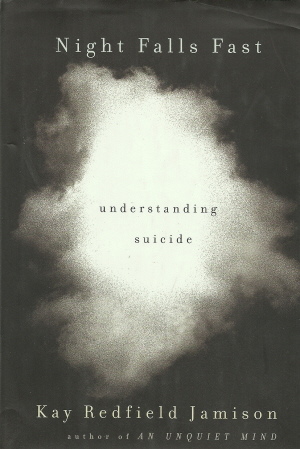 Alcoholism and other drug abuse are also high on the list of contributing factors--and often included among the suicide-related mental disorders.(7) Sometimes the substance abuse is attempted "self-medication" for depression. But many other things may push someone over the edge. Death of a family member, long-lasting trauma of physical and sexual assaults, divorce, financial catastrophe, criminal charges, or severe pain during terminal illness may lead to depression and desperation. People in crisis often believe their only choices are their current lives or death by suicide. They have too much mental pain and confusion to see how they might change their lives for the better. Often, though, they are deeply ambivalent about suicide. Many tell someone they are thinking about it with the hope that the other person will give them reasons to live. They may tell a friend or family member, but some prefer to call a telephone helpline. Local Helplines and a National Strategy American suicide prevention centers go back at least to the Save-a-Life League, established in New York City in the early 1900s. Rev. Harry M. Warren, a Baptist minister, started the league. He and his volunteers focused mainly on counseling; but Rev. Warren sometimes provided financial aid, "a square meal, a train ticket home, or an invitation to rest" at his large home outside the city. The league developed contacts in many other cities and eventually added "National" to its name.(8) An Anglican priest, Rev. Chad Varah, started the Samaritans in 1953 in England. Samaritans emphasize listening and "befriending" to tide people over a suicidal crisis. The English group inspired similar groups in other nations, including the U.S.(9) In Los Angeles, Dr. Edwin Shneidman and two other mental-health professionals used a different approach when they established the Suicide Prevention Center in 1958. Stressing both research and counseling, the center had an activist approach. Very activist: George Howe Colt, a writer who studied the center years ago, reported that several staff members once ran after a client who had gone out onto the center's roof: They "managed to grab her and wrestle her back inside before she could jump." On another occasion, when family members brought a suicidal woman to the center, and she tried to run away, a staff member "tackled her, put her in the car, and told her brother to sit on her while he drove her to the hospital." The Los Angeles center developed a telephone helpline, staffed by volunteers and open 24 hours a day throughout the year. Colt reported the work of a helpline volunteer named Pat, a very dedicated and patient woman. Pat used a large referral list as she dealt with lonely and desperate people who were contemplating suicide. "To the infirm, elderly widow Pat suggests she call her doctor in the morning, get some physical therapy, and become involved in a seniors group," giving her names and numbers to call. "Pat's voice inspires trust and confidence; even when the risk seems high, she never seems anxious or edgy..."(10) There are now many crisis helplines and suicide-prevention lines around the United States. Whatever name they go by, they handle calls about many different crises, not just suicide. Community mental-health centers, church groups, and others sponsor the helplines. Some rely heavily on volunteers, while others use paid staff on their lines, and some have both. For many years, helpline advocates were frustrated because they believed they were helping many people and saving lives, yet studies showed they had little or no impact on suicide rates. Research suggested they were dealing with many people who were distressed but not suicidal. Yet they were missing key groups, such as older men who live alone and are at high risk of suicide. Also, some callers had great difficulty getting through to helplines. They encountered repeated busy signals, and sometimes what might lead to ultimate despair: calling a suicide hotline, only to be put on hold.(11) A 2007 study was more encouraging, though it showed that more improvements are needed. Of 380 callers to eight crisis centers, nearly 12 percent said the calls "prevented them from killing or harming themselves." The study found that most helpline counselors worked with callers to develop action plans. Such plans might deal with seemingly simple--yet crucial--human connections, such as "having a friend come over to stay with caller" or "calling friends and family members." Of the 78 percent of callers who remembered their action plans during follow-up interviews, 75 percent had completed some or all of their plans. Their action on referrals, though, was not as good. Of those given new referrals to mental-health services, only 35 percent had followed up by keeping or making appointments. The authors suggested more follow-up calls, especially to callers at highest risk of suicide. They also suggested increasing helpline workers' "knowledge of community resources."(12) Work on a suicide helpline, while not for the faint-hearted, can be very rewarding. At the Volunteers of America office in Everett, Washington, where mental-health professionals staff the crisis helpline, their work is much more than just a job. Karen Kipling, VOA regional vice president, said that at day's end, a staff member goes home and thinks, 'Wow! I really helped somebody in a very difficult kind of situation.' Kipling added that "you end up feeling very good about that work."(13) The federal government has funded much research on suicide for decades. In 2001 a flock of federal agencies, led by then-Surgeon General David Satcher and aided by private groups, developed a National Strategy for Suicide Prevention (NSSP). It outlines an ambitious effort to mobilize both public and private agencies, at all levels, against suicide.(14) The NSSP takes a public-health approach, which has the strength of great determination. But that approach sometimes over-medicalizes issues that have other aspects and fails to appreciate limits on government power. 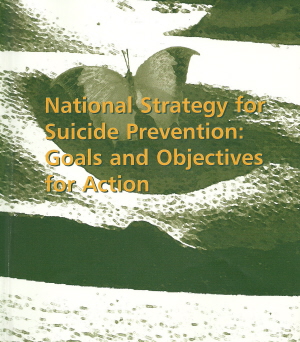 Dr. Alan Berman, executive director of the American Association of Suicidology, helped design the strategy. Asked about its effects so far, he said it "has set the stage for a long-term effort to prevent suicide" and "has catalyzed every state in our nation to follow suit and develop a strategy or plan." But he remarked that the NSSP has been "underfunded" thus far and that its public-private partnership "is only now about to happen" with establishment of an Action Alliance. "We clearly have a long road still ahead of us," he said.(15) Some Uncertain Trumpets in the Band The suicide prevention movement includes legions of fine people, both lay and professional, who have saved many lives. I believe, though, that some professionals undervalue the contribution of lay people and rely too much on "non-directive counseling." Some are even ambivalent about suicide itself. In suggestions on how to deal with suicidal people, a key federal agency urges lay folks: "Do not offer advice, but let them know that they are not alone."(16) I think the part about not offering advice insults the intelligence of lay people and frustrates their ability to be helpful. Sometimes advice is desperately needed, no matter who gives it. In the most critical cases: "Please put that gun down!" or "Hey, come down off the ledge so we can talk!" In other cases: "Let's go get a cup of coffee and look at other ways to solve this problem." That conversation over coffee can offer hope to the troubled person, and it may lead to a decision to find professional help. But some suicidal people don't want to consult professionals because of prior bad experience with them or lack of money to pay them. So a lay person may be the only one who can provide both hope and practical aid. In website advice, the federally-funded National Suicide Prevention Lifeline says: "Be non-judgmental. Don't debate whether suicide is right or wrong... Don't lecture on the value of life."(17) Whoa! It's true that a suicide crisis is not a good time for debates or lectures. Yet there is something very odd and off-putting in the phrasing here. This is coming from a suicide prevention source? And that website is not alone. A booklet on the Samaritans of New York website suggests listening to someone without "expressing personal values" and recognizing that everyone has a "right to commit suicide."(18) What is going on here? Partly, I believe, it is doctrinaire emphasis on the "non-directive counseling" advocated by the late Carl Rogers, a deeply influential American psychologist. Rogers asked: "Does the counselor have the right, professionally or morally, to permit a client seriously to consider psychosis or suicide as a way out, without making a positive effort to prevent these choices?....To me it appears that only as the therapist is completely willing that any outcome, any direction, may be chosen--only then does he realize the vital strength of the capacity and potentiality of the individual for constructive action." Then he added, "It is as he is willing for death to be the choice, that life is chosen..."(19) Perhaps this sometimes happens; but I doubt it's the typical outcome with people who are depressed, desperate, and confused. Rogers seemed to advocate what someone, in another context, called "walking a high-wire in a hard wind."(20) With no safety net. And one might ask: How can an ethical therapist be "completely willing" that any outcome or direction be chosen? Now, it's true that listening carefully to someone's despair and their reasons for suicide assures them that they are being heard and offers them real relief. Dr. John Draper, director of the National Suicide Prevention Lifeline Network, said in an interview that the "incredibly deep ambivalence" of many suicidal people comes out "if you just listen to the reasons for dying and try to understand them." Then "the reasons for living almost naturally surface for a number of people."(21) Yet one can be an excellent listener and still have a point of view that life is good and to be encouraged. (This does seem to be the basic viewpoint of Draper, his network, and the Samaritans, though non-directive dogma seems to get in the way.) A positive outlook can be conveyed both by careful listening, which shows real respect for the person and their life, and by questions about possible solutions of the problems that brought on the crisis. The therapist or other helper thus changes the focus from death and dying to making one's life better.  As for the Samaritans of New York reference to a "right to commit suicide," there certainly is no constitutional right of this kind in the United States. Suicide itself is not a crime; after all, the judicial system cannot punish the dead. But helping someone else die by suicide is a crime in most states. Three states--Montana, Oregon, and Washington--now allow doctor-assisted suicide in cases of terminal illness. Yet most states--and possibly all--have a process for involuntary psychiatric commitment of people who are a danger to themselves.(22) Rescue efforts by police, public funding of suicide prevention, and the National Strategy for Suicide Prevention also demonstrate a strong public policy against suicide. Someone who is determined to die by suicide usually can do so, but recognizing that fact is quite different from saying there is a right to suicide. Moreover, if the Samaritans of New York are suggesting a philosophical right to self-destruction, they may be sabotaging their own earnest efforts to help people. Some activists want to prevent suicide in general, but make an exception for doctor-assisted suicide in the case of terminal illness. They either favor it outright or are ambivalent about it. The American Association of Suicidology, established over 40 years ago for research and suicide prevention, does much valuable work. Yet in the 1990s, when it might have made a major difference in public policy on assisted suicide, it decided to take no position on it.(23) Elsewhere, much literature on suicide prevention does not even mention assisted suicide; it's the elephant in the room that many people don't want to talk about. There is not enough space here to make the case against doctor-assisted suicide--or to show that the "slippery slope" is not a theory, but a fact. Suffice it to say that people who have physical pain, whether chronic or terminal, need exactly what people with mental pain need: hope and practical aid. Local crisis centers should make referrals to top specialists in pain control, pain management centers, and first-rate hospice programs. Helpline volunteers and staff should learn about these subjects in their training programs. And they should know about the best nursing homes in their local areas, especially Eden Alternative homes and others that are deeply-committed to patient-centered care.(24) 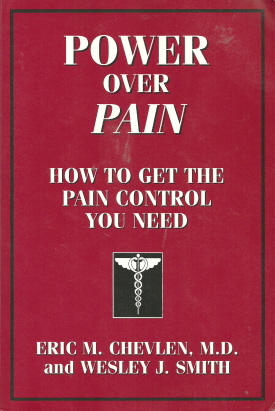 How To Be a Lifesaver Some day you may find that a friend, family member, or casual acquaintance is considering suicide. Thinking in advance about the best way to respond will help you be ready if that time comes. This is not to say that you can do the whole job alone. But you can intervene at a crucial point, buy the time that's desperately needed, and recruit others to help. Or you can join a team effort that someone else has started. I have reservations about some groups' advice on this subject. Some focus too much on what not to say. Most people find it hard enough to deal with a suicidal person at all. Giving them a lot of negative advice may have the effect of freezing them. But positive advice is helpful, and there is much to be said for encouraging the use of intuition and common sense. While I have no professional credentials in this area, I have dealt with some people who were contemplating suicide. Once a casual friend, after sudden financial catastrophe, told me he had thought about "blowing my brains out." I winced visibly--an honest reaction--and said that "there's always another way." Then I made a couple of practical suggestions on the financial side and followed up with other ideas later. I don't know whether he tried any of those ideas, but do know he appreciated the psychological support. I suspect he received far more important support from others who were closer to him. In any case, he is still in the game. But if everyone he talked to had read beforehand a list of what not to say to him, they might have been afraid to say much at all. Silence, or a weak and mumbled response, can do much damage. There is no "one size fits all" approach. A parent, brother, or sister will have a different approach than a casual friend. If the person in crisis has severe mental illness, helpers may have to call in the professional troops much sooner than if there is "situational depression" because of divorce or financial disaster. Drawing on sources listed in n. 25 below, as well as my own experience, here is what I suggest: If a family member or friend seems depressed, tell them you're concerned that they seem so down and ask if there is some way you can help. A small child or teenager may mention a problem of bullying at school or elsewhere. A college student may reveal any number of problems. A close friend may be facing domestic violence or financial catastrophe. Just having someone to talk to about the problem can give great relief to those in crisis. And you may be able to assist them directly (a meeting with the school principal, referral to a terrific lawyer or financial counselor, a loan or gift), or take them to someone who can. This sort of help may prevent a suicide crisis from ever arising.  In some cases, though, the person is already there. They may give broad hints about suicidal intent, such as "I don't see how I can go on" or "Maybe it would be best for everyone if I just disappeared." There may be other signs: suddenly making a will, buying a gun, or giving away prized possessions. If they give verbal hints, or you see other warning signs, or just have an intuition, you can say, "I'm worried that you might harm yourself because you're feeling so awful. Are you thinking about that?" If they say yes, it's best to avoid panic. As the Samaritans of Boston advise, "the person you're helping feels more out of control than you do and needs you to be calm." Many experts suggest asking whether the person has a specific plan for suicide, whether they have the means (a gun or a cache of pills, for example), and whether they have decided on a time. If they have specific plans, or if they seem agitated or deeply depressed, it's time to call 911. While waiting for the response team, you can assure the person that help is on the way and that "I know things are rough for you right now, but I really think you can get through this and feel much better. I'll stay with you, and I'll get others to help, too." Then go with them and the response team to a hospital emergency room. From there you can notify other friends and family members to rally around. You can ask one to remove the gun, pills, or other weapon from the person's home, another to do quick research on the best professional help in the area, and others to come to the ER to provide moral support. If you're a friend, you may be able to turn the main responsibility over to a family member when they arrive, yet still play a helpful supporting role. Let's assume for a moment that there is no suicide plan and no emergency, and you are still talking one-on-one with the troubled person. Listen to them carefully and sympathize with their suffering. Tell them, as psychologist Paul Quinnett advises, that "I'm on your side! We'll get through this." As he suggests, this offers assurance that there is "someone who cares if they live or die." Assuring them that there are others who care deeply might be the next point to make. For example: "I know your Mom and Dad live in another state, but they'd certainly want to know about your troubles and to help in every way they can. Would you like me to call them after we've talked? And should I call your brother?" Ask what might make them feel a little better. Have they eaten recently? Would they like a bowl of soup, or some coffee or tea? Have they had a good night's sleep lately? If they live alone, perhaps you could invite them to stay with your family for a day or two, catch up on their sleep, and get some good home-cooking. Being with friends or family can relieve what may be great loneliness and give them a more hopeful perspective on life. You might also ask about steps toward solution of any major problem they have mentioned. The section below on "Helping People Build Their Own Solutions" provides many ideas on this. If depression seems to be an overriding problem, they should consult a psychiatrist, psychiatric nurse, or psychologist--or a counselor or social worker who has special competence in dealing with depression and suicide. If you already know of a professional who has dealt with suicide and is very good, by all means recommend that person. If not, you can check with physicians you know and/or the local mental-health agency. Dr. Quinnett offers a helpful "Five Steps to Finding a Good Therapist" in his book, Suicide: The Forever Decision; this is available free online. If the person initially refuses to see any medical professional, they might be open to seeing a minister, priest, or rabbi. Many clergy can be very helpful; some have special training in this area; and all should be able to refer to medical specialists when they realize that more help is needed.(25) What Role for Drugs? Our society has a touching faith in the idea that there is a pill to solve every problem. Certainly, lithium helps many people who suffer from bipolar disorder or major depression, and antidepressants help many others. But what works for one person does not always work for another, and there are cases where medicine makes the situation worse. When a medication does work for a patient, it's still important to monitor the dosage and keep a close watch on side effects.(26) Also crucial is checking any other drugs the patient is taking, because some drugs may actually cause depression. Another key point: When older patients need drugs to counter depression or other mental disorders, they may need smaller-than-normal doses.(27) Still another: An alarming number of people kill themselves by overdosing on prescribed drugs.(28) Anyone who is suicidal should be prescribed only a small amount of a drug at any one time. 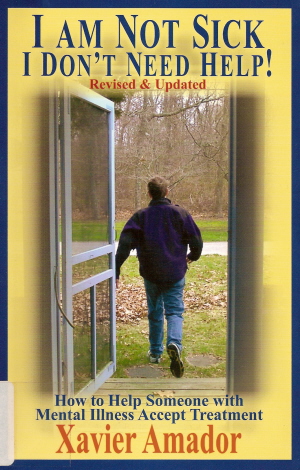 One of the best things family members can do is to keep a close eye on apparent effects of drugs and alert the prescribing doctor quickly about any problems. Family members can also help schizophrenic patients who are absolutely convinced--as many are--that they are not ill and do not need meds. Dr. Xavier Amador, a clinical psychologist, explains how to deal with this frustrating problem in I Am Not Sick, I Don't Need Help!(29) And Dr. E. Fuller Torrey has advice for dealing with a psychiatrist who fails to treat aggressively the depression of a suicidal patient. Torrey, a psychiatrist and leading schizophrenia expert, urges: "put your advice and admonitions in a registered letter to the psychiatrist, if necessary, adding that you have consulted your lawyer about the case. The psychiatrist will get the message."(30)> Helping People Build Their Own Solutions Medicine alone is rarely sufficient for someone who is suicidal. Some may not need it at all, or need it only for a short time. One therapist, worried by antidepressant side effects that his clients have experienced, asks: "Can the medication sometimes simply get in the way?"(31) But nearly everyone inclined toward suicide can benefit from good counseling or "talk therapy"--though, again, many may not need it for a long time. Several years ago, a study suggested that "cognitive therapy," which helps the patient deal with negative and suicidal thoughts, can help many.(32) Another very promising approach is Solution-Focused Brief Therapy (SFBT), which has borrowed some techniques from cognitive and other therapies and added many of its own. It is called "brief" because it often takes less time than older approaches. SFBT has not yet received the large-scale, blue-ribbon evaluation that scientists prize, but advocates hope it soon will. In SFBT, a therapist uses skilled questioning to help people build their own solutions and, in some cases, to gather a network of friends who can help them. This approach, pioneered by Steve de Shazer and Insoo Kim Berg, helps people with many different problems.(33) Two therapists--John Henden in England and Heather Fiske in Canada--have used it to aid many suicidal people and have written excellent guides to it. In his Preventing Suicide, Henden writes that, as a child, he tried many times to suffocate himself under his bed covers "to escape severe and enduring emotional abuse and neglect." One of his cousins died by suicide, and Henden himself considered suicide again in the 1990s. His own experience has given him great empathy and insight. It also has convinced him that "it is normal for people in extreme and/or abnormal situations to have thoughts and feelings about suicide."(34) When clients say they are thinking of it, he acknowledges that it's an option, but then diverts them to thoughts about other options. Henden notes that pioneers of the solution-focused approach found that their clients made faster progress "by talking more about their hopes for the future and their strengths, rather than describing their problem-peppered past." SFBT therapists, though, do not ignore the suffering of their clients. They listen carefully and show that they understand the pain--but then move toward thoughts about solutions. Their approach, Henden says, assumes that "generally people are competent at finding solutions to most of what life throws at them." They do have, after all, expertise about their own lives. So the therapist "draws on the client's expertise and then, as the work progresses, the client designs their own solution."(35) Henden stresses the importance of "very, very small steps" forward. "People who are deeply depressed and suicidal," he cautions, "regard anything as involving a huge effort." Questions that encourage tiny steps are often hopeful "presuppositions"--that is, they "presume something without stating it directly." The basic presupposition is that the person will have a future, as in: "When you've cracked this really low patch, how will your life be different?" There are also questions that help the client remember past successes, for example: "When you have been up against it before in life, how did you get through it on that/those occasion/s?"(36) 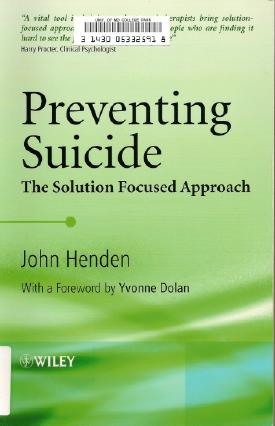 Heather Fiske, a Canadian psychologist, also has a mother lode of good questions. Her book, Hope In Action, includes many success stories. Like Henden and other SFBT therapists, she uses the "miracle question." They ask clients to imagine that after they go to sleep on a given night, a miracle happens so that their worst problems are gone. After waking, how do they find that things have changed? What do they notice first? Fiske comments, "When clients are so trapped in a view of their problems as interminable, intolerable, and inescapable that suicide seems like the only answer, it can take the idea of a miracle to break them out."(37) Clients tend to find the question intriguing, and they start thinking about the possibility of a better future. Responding to more questions, they usually reveal what they want out of life, some ideas of how they might make progress, and friends or family members who might help. Fiske has decades of experience and knows how to work with people where they are. Joe, a 14-year-old who had tried to jump off a bridge when drunk, initially was hard to work with--rude, sarcastic, and resistant to treatment. "Not a Model Citizen," Fiske says wryly. But when she asked, "What were you hoping to get out of coming here today?" he replied that "I was hoping to get people off my back." Fiske took it from there. She formed an alliance with Joe's mother (the main person on his back), who arranged a meeting over coffee with his best friends. They agreed to watch Joe's drinking, and they kept their word. Joe began to realize he could get people off his back by changing his behavior. He reduced his drinking, and his thoughts of suicide began to fade. Although he dropped out of regular school, he completed an alternative high school program and was able to hold a job. In her last conversation with Joe's mother, Fiske writes, "she told me that he had gone to Western Canada to stay with an uncle and learn welding."(38) Fiske also writes about a 67-year-old man, widowed a year earlier, in pain from rheumatoid arthritis, despondent, and suicidal. When he said that he spent most of the previous week in bed, a therapist focused on the exceptions: "What was different about the days when you somehow managed to get up?" And he responded, "That only happened when I had to babysit my grandchildren." That babysitting, Fiske suggests, probably gives him "a reason for living." She provides a list of follow-up questions that can be asked in such a case: how he's able to get himself out of bed, how his babysitting makes a difference for his grandchildren and their parents, what his wife would have said about his taking care of the grandchildren, what his hopes are for those grandchildren, and more.(39) Solution-focused therapists have an impressive bag of tricks to outfox the Grim Reaper. John Henden likes the "wise old you" question: "Just imagine you are much older and wiser than you are now, say 70 or 80 (or if a teenager, 25 or 26!). What advice would you give to you now about how best to get through this difficult time/sort things out for yourself/get more control over the situation?" He says that clients often respond "with a full and vivid description" of advice from their older, future selves.(40) There is also the much starker graveside question, which actually is a series of questions. The therapist asks the client to imagine having taken the "last resort option" (suicide) and being in a grave while "your spirit is hovering 3 metres above" and "looking down on the assembled crowd below." The therapist asks who is in that crowd, "Who is most upset?" and "What advice would they have liked to have given you before you took the 'last resort' option?" Henden says this line of questioning "has saved many lives."(41) He starts another thought-provoking set of questions by asking clients to imagine a time decades in the future, when they have overcome current problems and have gone on "to live a full and rewarding life. You are on your deathbed, looking back. What would your life have been like?....What people would you have known and met? What new places might you have visited? What sorts of holidays would you have had?....Where might you have seen the best sunrises and sunsets?"(42) Henden and Fiske, great yea-sayers to life, have much to offer other professionals, helpline volunteers, family members, and friends. They show us how to help people make their lives better and happier, richer and fuller, instead of throwing them away.  Notes author, for reviewing and commenting on a late draft of this article. 1. "Police Prevent a 17-Story Plunge," New York Times,13 Oct. 1972, 41. 2. Stephen C. Fehr, "Md. Man Rescued After Wilson Bridge Leap," Washington Post, 18 May 1990, D-1 & D-11. 3. Patricia Davis, "Chief Hurries Woman Off Bridge," ibid., 25 July 2002, B-7. 4. Edwin S. Shneidman, "Preventing Suicide," American Journal of Nursing 65, no. 5 (May 1965), 111-16, 111 & 116. 5. Centers for Disease Control and Prevention, "WISQARS Injury Mortality Reports, 1999-2007," www.cdc.gov/injury/wisqars/index.html (go to "Fatal Injury Data," then "Fatal Injury Reports 1999-2007" and then select "Suicide" and "2007 to 2007"), accessed 4 Aug. 2010. 6. Kay Redfield Jamison, Night Falls Fast (New York: Knopf, 1999), 290-91. 7. Ibid., 100-04; and National Institute of Mental Health, "Suicide in the U.S.: Statistics and Prevention," www.nimh.nih.gov (go to "Health Topics Home Page" and then "Suicide Prevention"), accessed 4 Aug. 2010. 8. "Cites 6,509 Suicides in 6 Months of 1921," New York Times, 8 Aug. 1921, 2; and George Howe Colt, The Enigma of Suicide (New York: Summit Books/Simon & Schuster, 1991), 286-88, 287. 9. Ibid., 289-90. 10. Ibid., 291-99, 295; 275-84, 279. 11. Herbert Hendin, Suicide in America, rev. ed. (New York: W. W. Norton, 1995), 204-13; and Colt (n. 8), 302-06. 12. Madelyn S. Gould and others, "An Evaluation of Crisis Hotline Outcomes, Part 2: Suicidal Callers," Suicide and Life-Threatening Behavior 37(3), June 2007, 338-52, 347-49. 13. Karen Kipling, telephone interview with the author, 1 July 2010. 14. U.S. Public Health Service, National Strategy for Suicide Prevention (Washington: U.S. Department of Health and Human Services, 2001). 15. Alan Berman, e-mail interview with the author, 20 July 2010. 16. U.S. Department of Health and Human Services, Substance Abuse and Mental Health Services Administration, "Lonely? Trapped? Hopeless? Alone?" http://mentalhealth.samhsa.gov/publications/allpubs/SVP-0141/, accessed 18 July 2010. 17. National Suicide Prevention Lifeline Network, "What If Someone I Know Needs Help?" www.suicidepreventionlifeline.org/GetHelp/WhatifSomeoneIKnowNeedsHelp.aspx, accessed 18 July 2010. 18. Samaritans of New York, I Can Help! Suicide Awareness & Prevention for Caregivers & Health Service Providers (New York: The Samaritans of New York, 2006), 4, www.samaritansnyc.org (go to "Awareness & Prevention Booklet"), accessed 20 July 2010. 19. Carl R. Rogers, Client-Centered Therapy (Boston: Houghton Mifflin, 1951, 48-49. 20. Former Rep. Bill Thomas (R-Calif.), quoted in Chris Frates, "Lobbyists Call Bluff on 'Daschle Exemption,'" 26 July 2010, www.politico.com/news/stories/0710/40207.html, accessed 26 July 2010. 21. John Draper, telephone interview with the author, 13 July 2010. 22. Washington v. Glucksberg, 521 U.S. 702 (1997); Vacco v. Quill, 521 U.S. 793 (1997); and ProCon.org, "State Laws on Assisted Suicide," http://euthanasia.procon.org/view.resource.php?resourceID=000132, accessed 21 July 2010. Many sources say most or all states have involuntary-commitment laws, but I have not found a recent summary of such laws. 23. "Report of the Committee on Physician-Assisted Suicide and Euthanasia," Suicide and Life-Threatening Behavior 26, supp., 1996, 1-19; and Alan Berman (n. 15). 24. Some useful references are: www.theacpa.org (chronic pain); www.aapainmanage.org (includes directory of pain-control specialists); www.hospicepatients.org (hospice watchdog); www.edenalt.org (Eden Alternative); and www.pioneernetwork.net (nursing-home transformation). 25. I am indebted to: Michael G. Rayel, "How to Prevent Suicide," 2 Oct. 2003, www.authorsden.com (search by title); Heather Fiske, Hope In Action: Solution-Focused Conversations About Suicide (New York and London: Routledge, 2008); Samaritans of Boston, "Helping the Suicidal," www.samaritansofboston.org (go to "Suicide Info"); Paul Quinnett, "QPR Gatekeeper Training for Suicide Prevention: The Model, Rationale and Theory" (QPR Institute, 2007), 26, www.qprinstitute.com (go to "Theory"); Paul Quinnett, Suicide: The Forever Decision (search for this under "Forever Decision - Online Book," and see chapter 18 on "Getting Help"); and American Association of Suicidology, "If You Are Considering Suicide," www.suicidology.org (go to "Thinking About Suicide?"). 26. Jamison, n. 6, 239-53. 27. David Lester and Margot Tallmer, ed., Now I Lay Me Down: Suicide in the Elderly (Philadelphia: Charles Press, 1994), 23 & 47. 28. John Henden, Preventing Suicide: The Solution Focused Approach (Chichester and New York: John Wiley, 2008), 18. Dr. Ron Salomon offers helpful comments and cautions on drugs in his Suicide (New York: Chelsea House/Infobase, 2007), 3-4, 35-37, 44-45, & 88-89. 29. Xavier Amador, I Am Not Sick, I Don't Need Help!, 2nd ed. ([Peconic, N.Y.:] Vida Press, 2007). 30. E. Fuller Torrey, Surviving Schizophrenia, 4th ed. (New York: HarperCollins/Quill, 2001), 314. 31. Henden (n. 28), 40-41. 32. Gregory K. Brown and others, "Cognitive Therapy for the Prevention of Suicide Attempts," JAMA 294 (5), 3 Aug. 2005, 563-70. 33. The Korean-born Insoo Kim Berg (1934-2007) studied in the U.S., where she met and married Steve de Shazer (1940-2005). Their work is continued by many practitioners in the U.S. and abroad. Please see: http://www.sfbta.org; www.solutionfocused.net; and www.ebta.nu. 34. Henden (n. 28), 7-8 & 37. 35. Ibid., 67, 74, & 104. 36. Ibid., 148 & 89-90. 37. Fiske (n. 25), 288-89 & 53. 38. Ibid., 187-93. 39. Ibid., 46-48. 40. Henden (n. 28), 143-44 (crediting Yvonne Dolan for original version of the question). 41. Ibid., 144. 42. Ibid., 145.
|